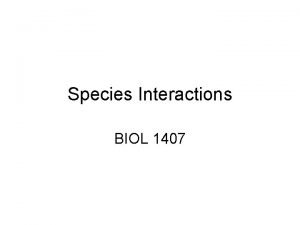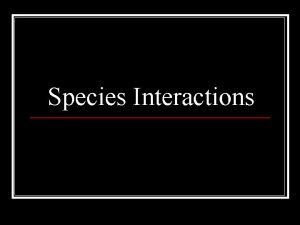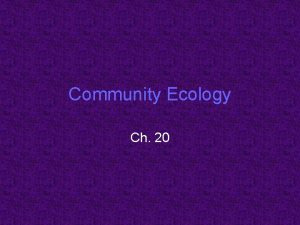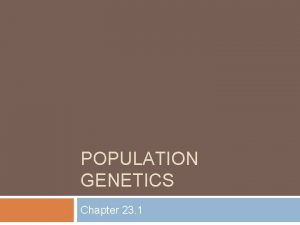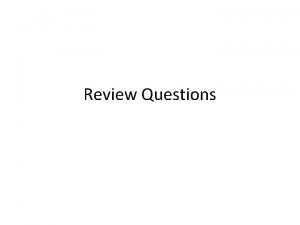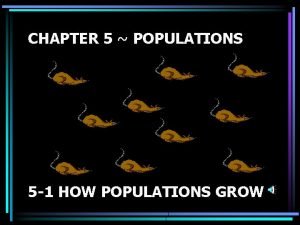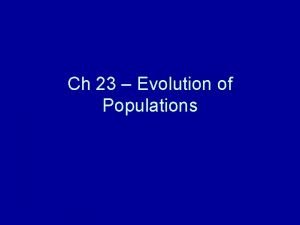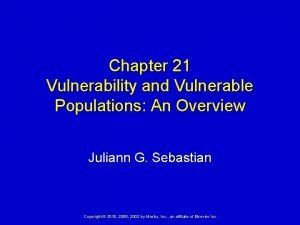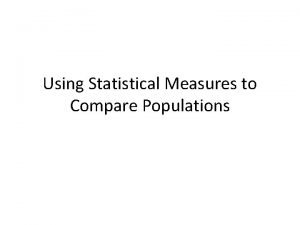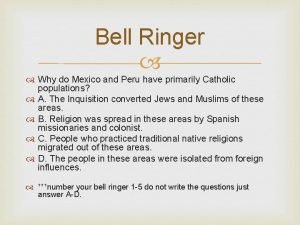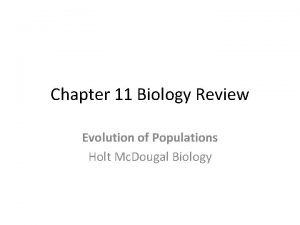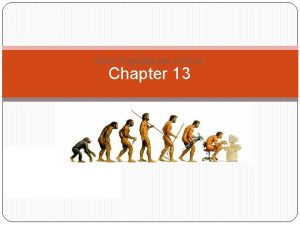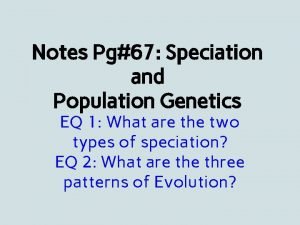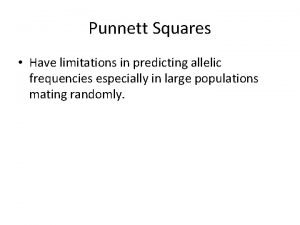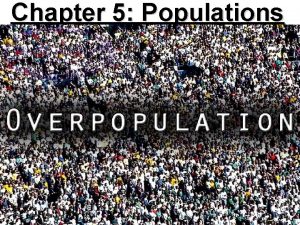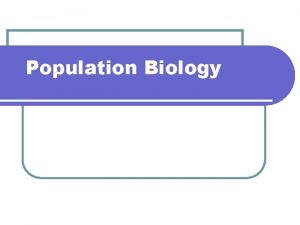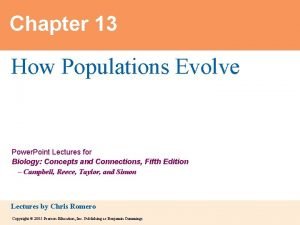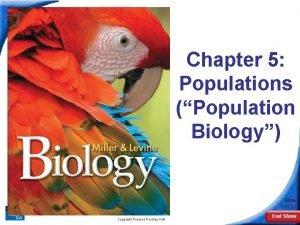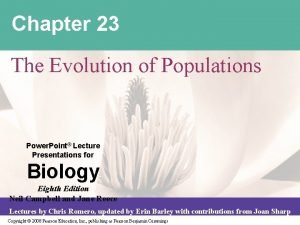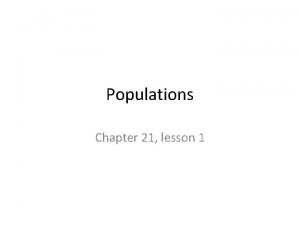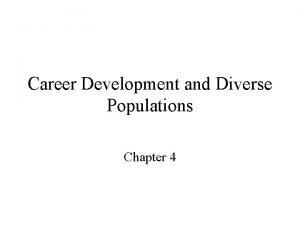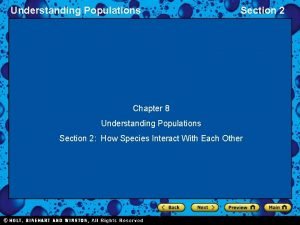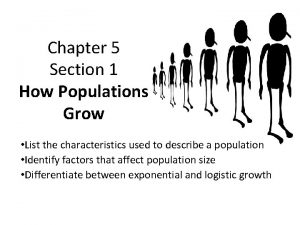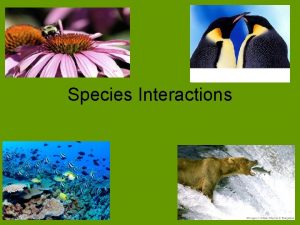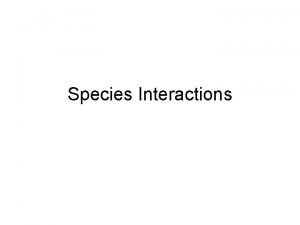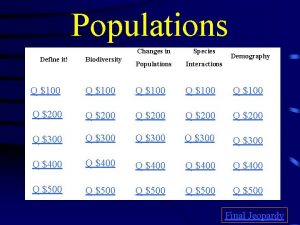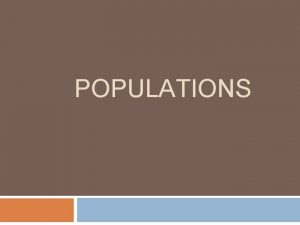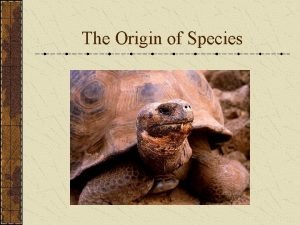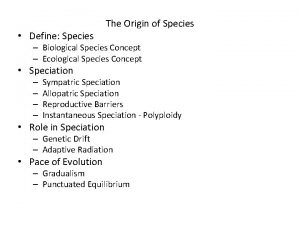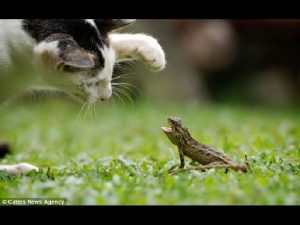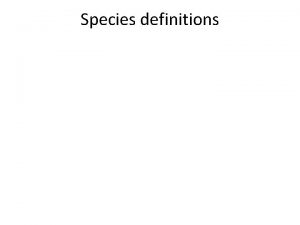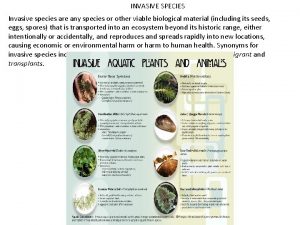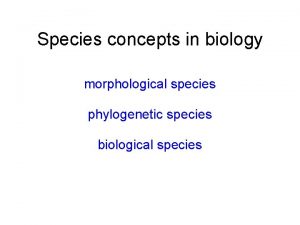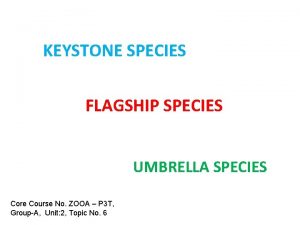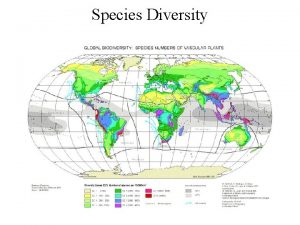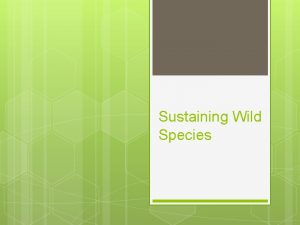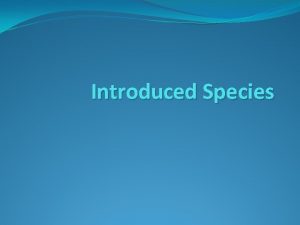Species Interactions Interactions n n Populations do not








































- Slides: 40

Species Interactions

Interactions n n Populations do not exist in isolation. All populations are tightly linked to other populations that share the same habitat.

Parasitism n n Parasites are extremely diverse. All parasites acquire resources from their host. This is always detrimental to the host. A “coevolutionary arms race” exists between parasites and their hosts. • Parasites develop better ways to attack and use the host, while hosts develop better defenses. • Example: Plasmodium and the human immune system. (Fig. 49. 3 a, b) • Parasites can manipulate the behavior of their host. (Fig. 49. 4)

Figure 49. 1 middle 1437 nm

Mosquito host 1. Sporozoites are injected from salivary gland of mosquito into human. Human host 2. Sporozoites reproduce asexually to form merozoites in human liver. 8. After meiosis, resulting cells develop into sporozoites and migrate to salivary glands. 7. Male and female gametocytes fuse in mosquito’s gut. Gametocytes Sporozoites in salivary glands Gut 6. When a mosquito bites the human host, gametocytes enter the mosquito as part of a blood meal. 3. Merozoites are released into bloodstream where they infect red blood cells. 4. Merozoites reproduce asexually until they cause red blood cells to rupture (causing anemia 5. Merozoites surviving human in human host). immune system become male or female gametocytes.

HUMAN IMMUNE DEFENSE AGAINST PLASMODIUM Plasmodium sporozoites cp 26 protein from Plasmodium HLA-B 53 Healthy liver cell 1. Healthy liver cell has an HLA-B 53 protein on its membrane. Cytotoxic T cell HLA-B 53 Infected liver cell 2. HLA-B 53 protein displays cp 26 protein from Plasmodium, indicating that the liver cell is infected. Infected liver cell 3. Cytotoxic T cell recognizes HLA-B 53 and cp 26 complex. Dead liver cell 4. Cytotoxic T cell kills liver cell before merozoites are produced.

In The Gambia, West Africa, different strains of Plasmodium have different versions of the cp protein. How successful are these different strains at infecting people? Plasmodium strain cp 26 Infection rate Interpretation Low HLA-B 53 binds to these proteins. Immune response is effective. cp 29 Low cp 26 and cp 29 strains together High cp 27 High cp 28 Average Immune response fails when these strains infect the same person. HLA-B 53 does not bind to these proteins. Immune response is not as effective.

Birds that prey on snails are the next host for the parasite Infected snails move to open sunny areas; tentacles wiggle. Uninfected snails stay in shaded areas; tentacles do not wiggle.

Predation n n When predation occurs, a predator kills and consumes a prey individual. Predators can regulate prey populations and/or reduce them to below carrying capacity. Prey have a wide array of mechanisms that they use to defend themselves from predation. Keystone predators are those that have an exceptionally great impact on all the other surrounding species.

Regulated prey population Prey population size Carrying capacity Population fluctuates within a narrow range Time

Prey population size Predator behavior Time

Predation rate (number of moose killed/moose density) 20 15 10 5 0 High Medium Moose density Low

Camouflage

Mimicry

Weapons

Prey and predator

Shell mass (g) Attachment strength (N) Correlation between predation rate and prey defense Low predation High predation Site type

Is prey defense induced by presence of predator? Are mussel defenses induced by the presence of crabs? Are mussel defenses induced by the presence of broken mussel shells? Seawater Crab (fed fish, not mussels) Mussels Shell thickness HIGH Yes Seawater No crab Broken mussel shells Intact mussel shells Mussels Shell thickness LOW Shell thickness HIGH Shell thickness LOW Yes

Keystone predator present

Keystone predator absent

Keystone predator present

Keystone predator absent

Herbivory n Unlike predators, herbivores are plant-eaters that remove tissue from their prey, but rarely kill them.

Figure 49. 11 Predator Herbivore Primary producer (plants)

Competition n n Competition is detrimental to both of the individuals or species involved because it reduces available resources. Every species has a unique niche, or set of habitat requirements. • Competition occurs when niches overlap. • Competitive exclusion results when niches completely overlap. • Coexistence is possible if niches do not overlap completely and the species involved partition the available resources. • Coexistence is also possible if other factors serve to limit the better competitor in some way.

Number consumed One species eats seeds of one size range Seed size

Partial niche overlap: competition for seeds of intermediate size Species 2 Number consumed Species 1 Seed size

Complete niche overlap Number consumed Species 1: Strong competitor Species 2: Weak competitor, driven to extinction Seed size

Consumptive competition occurs when organisms compete for the same resources. These trees are competing for nitrogen and other nutrients.

Preemptive competition occurs when individuals occupy space and prevent access to resources by other individuals. The space preempted by these barnacles is unavailable to competitors.

Overgrowth competition occurs when an organism grows over another, blocking access to resources. This large fern has overgrown other individuals and is shading them.

Chemical competition occurs when one species produces toxins that negatively affect another. Note how few plants are growing under these Salvia shrubs.

Territorial competition occurs when mobile organisms protect a feeding or breeding territory. These red-winged blackbirds are displaying to each other at a territorial boundary.

Encounter competition occurs when organisms interfere directly with each other’s access to specific resources. Here, spotted hyenas and vultures fight over a kill.

Mutualism n n n Mutualism is a type of interaction that is beneficial to both species involved. It does not involve altruism. The benefits are a by-product of each species’ own self-interest. The costs and benefits of mutualism vary widely between partners, over time, and from one area to the next.

Mutualism between ants and fungus

Mutualism between fish

Treehopper excreting honeydew, which is harvested by ants

Are ants beneficial to treehoppers? 1000 m 2 study plot Plants with ants removed

Which treatment contained more treehoppers? Average number of young treehoppers per plant 100 80 Plants with ants 60 Plants without ants 40 20 25 July 30 5 10 August 20
 Symbiosis and species interactions keystone webquest
Symbiosis and species interactions keystone webquest Parasitism pictures
Parasitism pictures Cape buffalo and cattle egrets relationship
Cape buffalo and cattle egrets relationship Section 20-1 review species interactions
Section 20-1 review species interactions 6.1 habitats, niches, and species interactions answer key
6.1 habitats, niches, and species interactions answer key Parasitism
Parasitism Keystone species definition biology
Keystone species definition biology Sadlier vocabulary workshop level d unit 1 synonyms
Sadlier vocabulary workshop level d unit 1 synonyms Genetic drift in small populations
Genetic drift in small populations A biologist discovers two populations of wolf spiders
A biologist discovers two populations of wolf spiders Complex patient populations
Complex patient populations Chapter 5 lesson 1 how populations grow
Chapter 5 lesson 1 how populations grow Gene pool
Gene pool Why are populations the smallest unit of evolution
Why are populations the smallest unit of evolution Chapter 21 vulnerability and vulnerable populations
Chapter 21 vulnerability and vulnerable populations Using statistical measures to compare populations
Using statistical measures to compare populations Why do mexico and peru have primarily catholic populations?
Why do mexico and peru have primarily catholic populations? Evolution of populations section 11 review
Evolution of populations section 11 review Chapter 13 how populations evolve test
Chapter 13 how populations evolve test Genetic drift
Genetic drift Punnett square
Punnett square Section 5-1 how populations grow
Section 5-1 how populations grow Chapter 23: the evolution of populations
Chapter 23: the evolution of populations Population definition
Population definition Chapter 13 how populations evolve
Chapter 13 how populations evolve Chapter 10 comparing two populations or groups answer key
Chapter 10 comparing two populations or groups answer key Territoires populations et développement quels défis
Territoires populations et développement quels défis Chapter 5 lesson 1 how populations grow
Chapter 5 lesson 1 how populations grow Chapter 17 evolution of populations answer key
Chapter 17 evolution of populations answer key Genetic drift vs flow
Genetic drift vs flow 5-1 how populations grow
5-1 how populations grow Chapter 23 the evolution of populations
Chapter 23 the evolution of populations Lesson 1 populations answer key
Lesson 1 populations answer key Evolution of populations section 16-1 genes and variation
Evolution of populations section 16-1 genes and variation Section 5-3 human population growth
Section 5-3 human population growth 99image
99image Career development of diverse populations
Career development of diverse populations Evolution of populations section 16-1 genes and variation
Evolution of populations section 16-1 genes and variation Chapter 8 understanding populations
Chapter 8 understanding populations 5-1 how populations grow
5-1 how populations grow Chapter 16 evolution of populations vocabulary review
Chapter 16 evolution of populations vocabulary review

